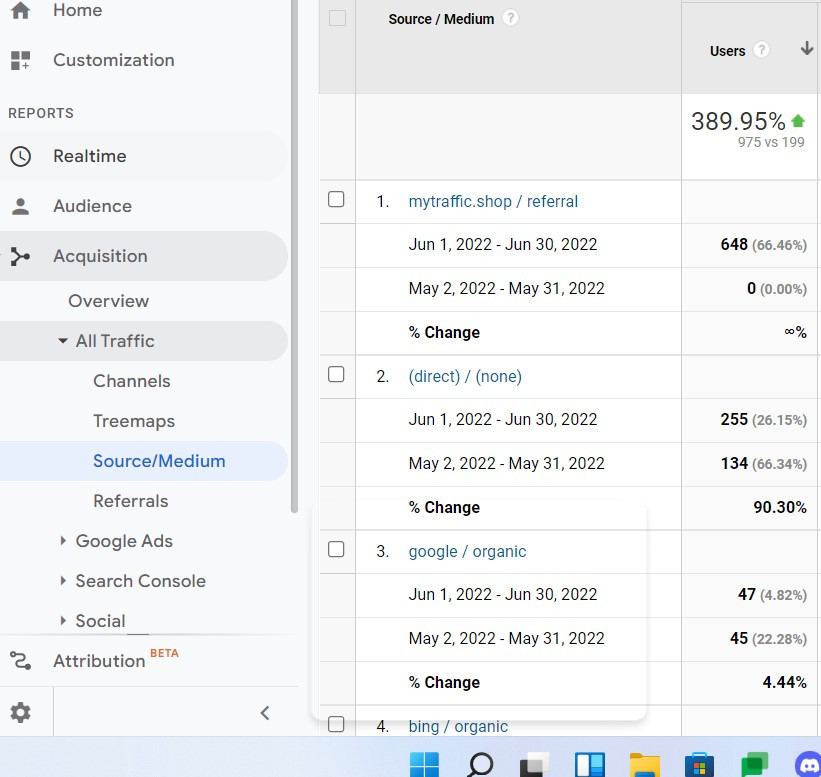Directive Blogs
Has Your Website Traffic Dropped?
There are a lot of reasons that website traffic can fluctuate. Sometimes, it has little to do with your actual website, and more to do with outside forces. Let’s take a look at some of the things that can cause major ebbs and flows in your website traffic and analytic reports.
Traffic Bots Can Easily Skew Your Marketing Data
We’ll start with one of the more annoying sources of data noise out there—traffic bots. Bots aren’t people, they are typically automated software that crawls the web, indexing and noting content, gathering information, or simply looking for very specific types of code. Most bots aren’t actually bad. Google itself uses web crawling bots in order to observe and index the vast Internet. Most social media sites utilize bots, as do other search engines, analytic tools, and other entities. You actually want these bots visiting your website, and while they can cause some trouble for you (they can inflate traffic, chew up computing resources on the server, etc.) they are generally benign.
Not all bots are good, however. Some spam bots will overinflate your analytics, and try to send you down a rabbit hole while looking into where that traffic is coming from, and potentially lead you to a dangerous site. When you get spikes in your analytics that look like this, and it’s referral traffic, it’s worth being a little cautious.

If you see odd behavior in your traffic, understanding what source the traffic is coming from will help determine whether it’s legitimate or fake.
What Kinds of Traffic Sources Are There?
When it comes to online marketing, it’s important to understand how traffic can find your website. That way, if something is going well and actually working, you can make the decision to put more effort into that, and adjust how you handle tactics that don’t work. For instance, if most of your traffic is coming from your direct mail campaigns, but hardly anything comes from social media, it means you should put more focus on direct mail, and put effort into evaluating your social media presence, as it’s underperforming.
There are a few basic traffic sources, as classified by Google Analytics:
Organic Traffic is traffic that comes from the search engines.This is typically going to be human traffic for the most part. When someone does a search on Google, Bing, or any other popular search engine, it falls under this category.
Paid Traffic are users that come from paid ads, like those from Google Ads. If you aren’t doing any paid advertising on the search engines, you likely won’t get any traffic. While this traffic should typically be human traffic, there’s still a chance bots and scammers can hit your website from ads.
Direct Traffic are users who go directly to your website, either by typing in your domain name into the address bar of their browser, or clicking on a bookmark, or scanning a QR code. Direct traffic will usually be human traffic, but there is a chance small amounts could be bots.
Referral Traffic is traffic that comes from other websites. If the Daily Star posts a piece on you, and links to your website, it can lead to referral traffic. If someone on the Internet blogs about your business, the traffic from their blog to your site would typically count as referral traffic. It’s generally a good thing, but since the Internet is basically the wild west, anyone can create a site, and use it to send traffic (real or fake) to any other site. In the example we gave above, the traffic solely existed to try to trick whoever was looking at Google Analytics to check out the referral website. Sneaky!
Social Traffic is referral traffic that specifically comes from social media sites like Twitter and Facebook. Generally, this should be human traffic, but there is a chance that some of it could be fake.
Email Traffic is human traffic coming from links in emails. Sometimes an email service might get filtered as referral traffic.
How to Determine the Source of Traffic
The best way to find the source of traffic is by looking at your Google Analytics. Going to Acquisitions>All Traffic and looking at the various categories, such as source/medium may give you an idea of what is generating your rogue traffic.
If we look at our example we can see that the majority of our questionable traffic is coming from a referral source; specifically, a traffic bot.

As we noted previously, a traffic bot isn’t necessarily a threat to your website,or its security. The purpose of a traffic bot is to have businesses discover them in their data and click on the link to see what they are, driving traffic to the botter’s site.
The reason why it’s important to understand where traffic is coming from, is that there is a strong possibility that Google will find the bot(s) and remove them from your data. Once removed, you will see a significant decrease in traffic for the next month as your traffic patterns return to normal. This brings us full circle, and shows why it’s essential to verify what is generating traffic in determining what your next steps will be, and whether or not it’s an area for concern.
Other Reasons Traffic Can Fluctuate
Is your website traffic seasonal? Keep in mind that people change their habits around the holidays. If your business naturally slows down during certain times of year, you can typically expect your website traffic to reflect that.
Are you doing less to market your business? Traffic can directly be correlated with the efforts you put into making your website experience valuable. If you aren’t producing helpful content, you’ll get less traffic.The same goes for your other efforts. If you aren’t using social media, or stop doing traditional marketing, it could have a trickle effect on your organic traffic over time.
Is your social media presence stale? Social media is one of the most important avenues for a business, whether you are B2B or B2C. Don’t brush this resource aside!
Are you not ranking for the terms you should be? Search engine optimization is a very complex process, and while ranking at the top of the search engines isn’t as valuable as it used to be, it still helps you get found. If your rankings have declined, it’s worth evaluating your current site. We can certainly help with that—we offer free SEO evaluations.
Maybe it’s something beyond your marketing? Things change. A professional switchboard operator or projectionist probably isn’t going to be as busy as they used to be. If there is less demand for your products or services, you’ll naturally see a decline in website traffic. It’s worth evaluating and looking into ways to modernize your offering.
Are You Using All the Data at Hand to Boost Your Marketing Efforts?
If you’re not taking advantage of the insights provided by your data, you aren’t giving your marketing the support it needs to be successful. We understand the challenges that come with running a business and trying to promote your services. If you are struggling to do either, or both, it could be time to partner with a marketing agency that understands what it takes.
At Directive, we’re here to help! We can develop a marketing plan for your business. Give us a call at 607-433-2200 to schedule an appointment.
Comments


